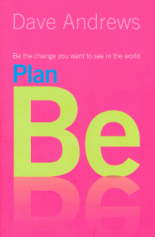Jarrod McKenna, Peace Fellow
By Adrian Glamorgan
A few young people inspired by the work of Martin Luther King Jnr, Dorothy Day, the historic Peace churches and ultimately Rabbi Yeshua, the Nazarene, have established a spiritual community, “The Peace Tree,” in one of the more demoralised suburbs in Perth. This idealistic, practical, intentional community’s connections with Christianity are unapologetic, and their adoption of Quaker business processes, a matter for the record. One of their founding members, Jarrod McKenna, has been awarded the Donald Groom Peace Fellowship.
Using music, media and the arts to engage students in their schools and community, Jarrod and his EPYC (Empowering Peacemakers in Your Community) team:
• explore themes of nonviolence education (not merely as a tactic of social change, but as a chosen lifestyle);
• explore personal, ecological and social justice concerns; and
• offer a “spirituality of engagement,” ( not escapism), to meet our world’s needs in transformative ways
People are starting to pay attention. Tim Costello has said: “Around the world there is an emerging generation of young leaders who are rediscovering the radical implications of Jesus’ message of the ‘kingdom’ and are letting their lives speak of these alternatives to the cycles of violence, poverty and environmental destruction. Jarrod McKenna is one such young leader Australia has to offer, and the EPYC program promises to empower many more.”
Youth ministry for peace these days is not just confined to schools and the restless and homeless in the soulless suburbs. Apart from interstate visits and phone hook ups, it’s also in the cyber-alleys and blogspots. There Jarrod is likely to be lamenting the US War, documenting a presence at Pine Gap, asking what Jesus would do, or reviewing Lee Camp’s Mere Discipleship, finding that “there is a longing, a quiet yet desperate intuition that people can’t shake. It’s a deep, almost lamenting sense that there must be more to life in Christ than we have been finding in our conventional church settings. Many in house-church/alternative churches and communities are gathering together because of this unshakeable sense.”
If twenty-first century Christianity is heading towards a post-denominationality, Jarrod is on reconnaissance. Based on these explorations, Jarrod thinks the future is not found in modernism’s twin theological children of unthinking fundamentalism (which causes so much damage) and unengaging liberalism (which merely gives itself over to the motifs of other ideologies.) Instead he explores new approaches (some call them post-modern) in which we allow ourselves to be experientially submerged in a “narrative theology,” living with integrity something far more counter- or alternative-cultural, that is found, for example, in the Gospels.
Dave Andrews, author of Compassionate Community Work and Christi-Anarchy has written of Jarrod that he “can help you unpack the radical implications of Jesus’ Sermon on the Mount in a way that will give you a clear, specific, practical set of guidelines for nonviolent engagement to work with. And he can do it with a magician’s touch – Jarrod is cool, clever, and creative.” He nevertheless strives to avoid the “Constantinian shift” which universally tries to impose convictions and values on others, also keeping abreast of narrative theologians such as Biblical interpreter Walter Wink (who coined the phrase “the myth of redemptive violence”), Mennonite John Howard Yoder, and N.T. Wright, pacifist theologians that could reignite our own Quaker thinking.
Meanwhile, EPYC offers a self-confessedly heroic impulse, a journey for gentle revolutionaries, of gentle prophets, of a fearless, confrontational, gentleness central to the message. Practically, the youth organization simply works to “train the next generation of ecoprophets in the transformational nonviolence of Christ.” But Jarrod’s vision is much bigger. In Jarrod’s own words, “EPYC’s vision is to inspire, invite and equip a generation to receive and participate in God’s vision of a world transformed by love….As I sometimes put it in shorthand, my work is about equipping a generation to ‘walk out’ now, what God wills the world to be ultimately.”
His presence at Australia Yearly Meeting in Hobart 2007, both in the general plenary and amongst Young Friends, is bound to create a deepening conversation around how Quakers can live the work of peace generally, including how we reach out to young people, and where (or if) the kingdom of God informs our work. Is our peace testimony a tactic, or an embodied truth? If it is an embodied truth, can we name the body?
It’s a conversation that might be timely. We need to be tender, but also daring. In meetings, do we quote satyagraha from Gandhi, almost because he’s not Christian, avoiding the hurt of Christian fundamentalism, but thereby repeating the error of liberalism? Do we cite Buddha, because of his message of nonviolence, to again signal our openness to other religions, but shrink from pacifist developments in Christianity? Is Martin Luther King Jnr mentioned more for the nod to our faith-in-action beliefs than for his constant references to Old and New Testament spiritual canon? The black pastor had seen the Promised Land, but do we only get as far as Martin Luther King? Was the “promised land” a rhetorical flourish, or a central story of Christ’s transformational power, to be formed in and lived out of?
Whether it be amongst young students or seasoned activists, Quaker meetings or charismatic churches, events organised by Greenpeace and The Wilderness Society or in prisons, Christ’s message about the ‘kingdom of God’, the deeper reality of God’s love transforming reality preached by the Nazarene, (and echoed by the black minister at the helm of the civil rights movement), remains central to this year’s Donald Groom Peace Fellow. Out of that, the simple lifestyle, the peaceful choices, the struggles with grace, all naturally arise.
Such remarkable youthful ministry, directed outward, inevitably holds a mirror back to the older generation that supports it. In the glass darkly, Friends, what can we now see?



